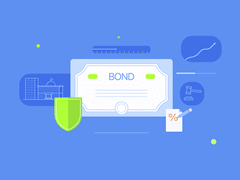Sometimes investing can seem too pricey, even though there are returns attached to it. Most of us hesitate to invest with huge capital and also wonder if it could be done with less capital.
Although investors have the choice of picking a stock with a lower price or waiting until a dip to purchase a costlier stock at a discounted price, in the fixed-income market, corporate bonds will now become more accessible as their face value will be reduced.
Bonds are without a doubt a safer investment option because they are associated with lower risk compared to stocks and greater returns compared to FDs. To help retail investors participate actively in the bond market, SEBI has decided to lower the face value of these corporate bonds.
Let’s see how much it has reduced and how it can help a retail investor in this article.
Corporate bonds face value decision
Though the bond market came much earlier, it was not regulated quite well to see a greater level of participation like in the stock market. It’s a different discussion as to why stock is more appealing to many for such a huge participation; bonds are now slowly gaining greater traction due to several major changes taking place.
SEBI: The regulator, to deepen participation and volume, has taken a move to reduce the face value of the bond
So here’s the crux, in 2022, it was reduced to 1 lakh and now, in 2024, the face value has been reduced to 10,000. That’s a massive reduction, which could allow retail investors to not think much about investing in such an investment.
The great interest in the stock market is also primarily due to lower ticket sizes. This act can turn out to be beneficial for corporates to get more funding and also for investors, as it is less costly for them to invest, try out, and understand the benefits of debt instruments.
Bonds were earlier a HNI product, now it’s no longer a perspective to look at. It is for everyone, including retailers.
The journey of corporate bonds in India
What is the bond face value?
If you didn’t follow the discussion about reducing face value, here’s what you need to know about the concept of face value in the bond market.
Both stocks and bonds have a face value attached to them.
In the stock market, a face value is the price at which the company enters but an investor mostly can’t purchase the stock at a face value as the price in the market rises or falls based on supply and demand and they can purchase at market value and hence this concept is not of much importance in the stock market.
In the bond market, the face value, also referred to as par value, is the price at which the company issues a bond and is written in the bond certificate as well. But when it comes to the open market, the price of the bond will fluctuate based on the interest rate hike or cut and the company’s financials.
How to analyze the credit worthiness of corporate bonds?
Let’s get into it a bit deeper
Suppose the issuer, a company, wants to raise a bond of about Rs 1 crore at a face value of Rs 10,000. It can raise about 10,000 bonds and the subscription closes with that.
So the investor can purchase one bond by paying Rs 10,000, two by paying Rs 20,000, and so on. The price at which you purchase a bond is called the face value, otherwise called the par value.
When it comes to the market, it can be traded in the secondary market, just like in the stock market. Here, the price of the same bond can rise and fall based on interest rates and company financials. If the interest rate increases and the RBI decides to increase the repo rate, then the price of the bond will decrease. Here, it holds an inverse relationship, unlike the stock market.
With an inverse relationship, it only means that when the interest rate rises, the bond price reduces and when the interest rate falls, the bond price increases.
So if you are selling the bond in the secondary market and decide not to keep it till maturity, then you are profitable only if you sell it at a higher price, which means the interest rates must reduce.
That way, assuming you are now selling the bond in the secondary market at Rs 10,100, you are profitable by Rs 100. Basically, if the price is more than the face value, it is called above par and if it is below the face value, it is called below par.
If you hold it till maturity, then regardless of what you are selling to the issuer at face value, you are receiving a fixed interest rate from the issuer for this.
So, when SEBI reduces the face value, what does it mean? If the same issue mentioned above has a face value of Rs 1,00,000 and Rs 10,00,000, what would happen?
Assuming you want to buy 2 units of bonds, then you must invest between Rs 2,00,000 and Rs 20,00,000 lakhs for such a face value. This can seem costlier for a retail investor to consider investing.
With SEBI’s new regulation, it has now become affordable for retail investors to buy those 2 units of bonds for just 20,000! It’s a great deal.
What is the difference between corporate and government bonds?
As an investor, what do you think of this move by SEBI? Here’s what the GoldenPi CEO thinks. Want to invest in corporate bonds and other fixed income investments? Find it out at GoldenPi – a trusted fixed income investment platform.







